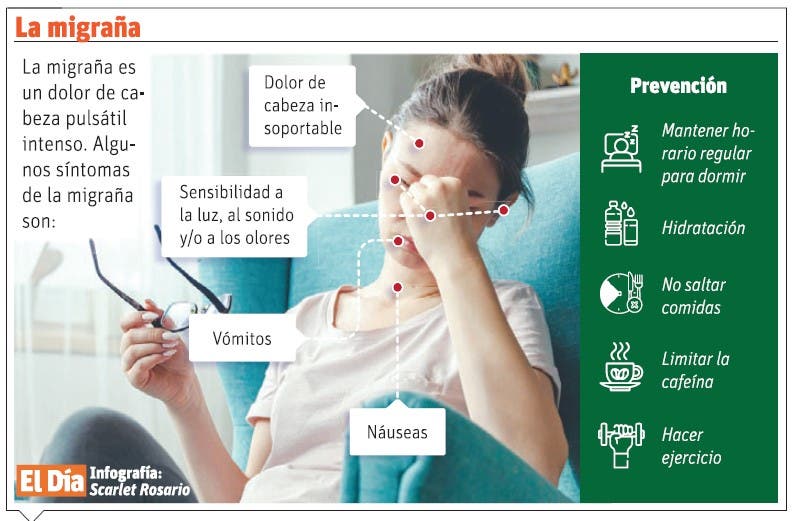Santo Domingo .-High temperatures in the area, atmospheric pressure, as well as greater exposure to sunlight and humidity are triggering factors for migraines.
This is how Ana Reyes, a migraine patient, has ended up in the emergency room of a health center twice in the last month due to the severe headaches that have attacked her.
She said that her migraine attacks sometimes last two or three days, while sometimes the pain appears in the morning when she wakes up and disappears during the day.
People who suffer from recurrent headaches tend to be more sensitive to these factors than those who do not have this predisposition, explained neurologist Pedro Roa.
In addition to heat, the specialist indicated that dehydration and changes in sleep and diet patterns, such as skipping meals, significantly influence the risk of migraine attacks.
He stated that the trigeminal vascular system, which is composed of pain-sensitive cranial structures, causes a lower tolerance to the heat threshold in migraine.
“There is currently research into the existence of a genetic predisposition that makes one susceptible to heat as a trigger for headache attacks,” Roa said, adding that a migraine attack can last from four to 72 hours.
Common cause
—Consult neurology
Pedro Roa stressed that the most frequent reason for consultation is headache associated with migraine. The prevalence in the general population is estimated at between 10-20%. Some pain crises last for days without a break.
Doctor urges not to abandon therapy
Recommendation. During this season of extreme heat, Pedro Roa, an expert in diagnosing nervous system diseases, advised patients who suffer frequent migraine attacks not to abandon preventive treatment and to follow up with their doctor.
Pedro Roa, neurologist. archive
He said it is necessary to stay hydrated, wear light clothing, sunglasses and avoid exposure to places with high temperatures, as this helps mitigate some of the headache triggers.
Migraine, defined as a headache of varying intensity, occurs most frequently in people between 25 and 55 years of age, with women being more affected than men. However, 40% of those who suffer from this condition are still undiagnosed.

















